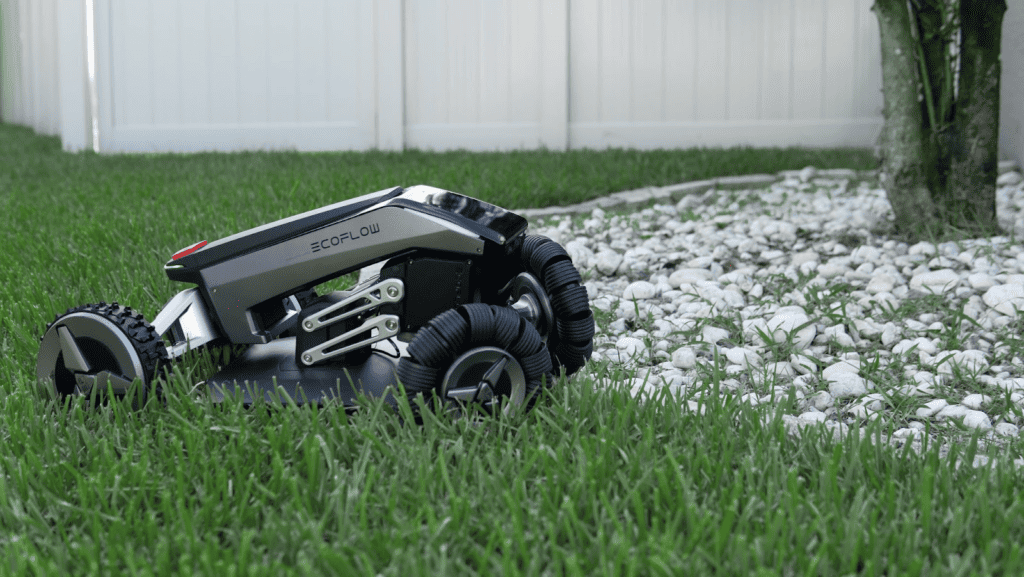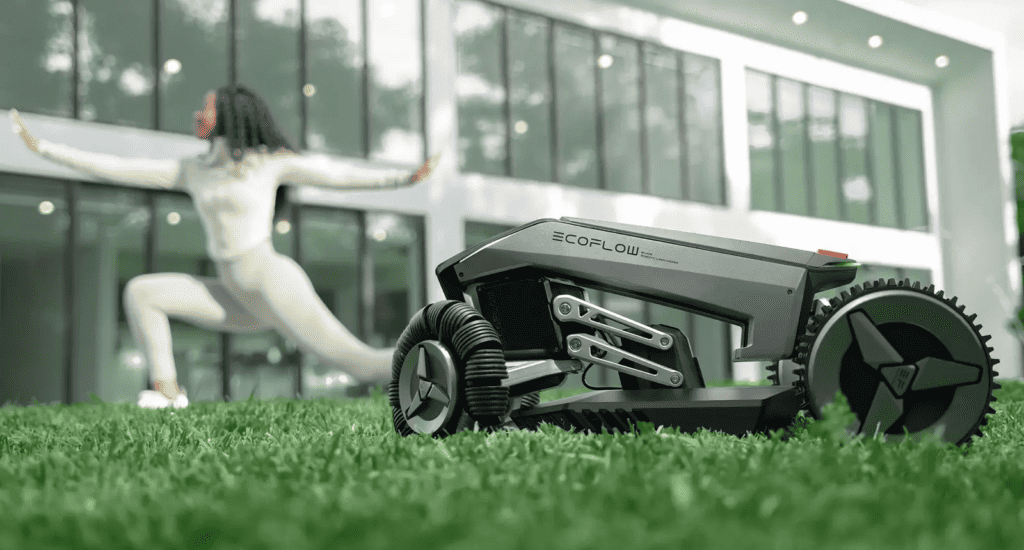Technology is advancing faster than ever, giving homeowners numerous innovations to eliminate tasks and save time.
Yard maintenance has always been one of the most laborious aspects of home ownership. With the advent of robotic lawnmowers, technology has provided homeowners with yet another time-saving innovation.
Robotic lawnmowers are battery-powered devices that automatically mow your grass based on boundaries and schedules that you set.
There are several types, from virtual boundary robotic mowers to automated mowers that use physical boundaries like a perimeter wire.
Learn about the different types of robotic mowers and explore the factors you must consider to find the best solution for your lawn.

What Are the Different Types of Robotic Lawn Mowers?
Physical Boundary Robotic Mowers
While still a fledgling industry, innovative thinkers have been trying for a few years now to strategize robotics for lawn care. Physical boundary robotic mowers were among the first generation to come out of these innovations.
Physical boundary robotic mowers are a type of automated lawn mower that utilize boundary wires or physical barriers to define their mowing area. Built-in sensors detect the physical boundaries as the mowers navigate around your yard.
Most physical boundary robotic mowers have similar characteristics, including:
- Boundary Wire: Physical boundary robotic mowers usually come with a boundary wire that you install around the yard’s perimeter. You can either bury the wire or attach it to stakes. The low-voltage wire transmits a signal to the mower whenever it approaches the border, containing it within the preset boundary.
- Obstacle Detection: Most mowers will have basic obstacle detection features, allowing them to maneuver around rocks, trees, and other objects in the yard. It’s also a safety feature to avoid children and animals.
- Charging Station: Physical boundary robotic mowers have a charging station to return to when their battery is low. Many models automatically navigate back to their chargers, while others may require human assistance to plug in and charge.
- Weather Resistance: Most robotic mowers have some level of weather resistance. Some may be completely waterproof, while others will have less durability. Depending on your mower’s IP rating, you may need to bring your robot inside during severe weather.

Virtual Boundary Robotic Mowers
The latest generation of robotic mowers removes the need for physical boundaries by going virtual. Instead, they map their boundaries using a combination of wire-free technologies, including GPS, cameras, LiDAR, and Real-Time Kinematic positioning.
The most significant benefit of virtual mowers is that you can set and edit the boundaries from your smartphone. These mowers are just one of many devices that have taken advantage of smart technologies for home automation.
It only takes a few minutes and removes the need for physical barriers. Wire-free boundary-setting eliminates the need to alter the mowing area.
This type of navigation system allows for advanced setups, such as the ability to travel between multiple mowing areas. You can have the same robotic mower cut both the front and backyards if there is a path to travel between them.
Virtual boundary mowers cut the grass in a more organized manner. Since they know the area they need to mow, they can automatically optimize the mowing route. Physical boundary mowers often cut the grass in a random, haphazard way that wastes time, uses more electricity, and typically results in a messier cut.
With virtual boundaries and visual sensors, robotic lawnmowers are more intelligent about their obstacle avoidance and detection.

Advanced models like the EcoFlow Blade can detect debris like leaves, sticks, and animal waste — and automatically sweep them up with the optional lawn sweeping attachment.
Factors To Determine the Best Robotic Lawn Mower for You
To determine the best robotic lawn mower for your yard, you need to consider a variety of factors, including:
- Yard Size
- Maintenance and Durability
- Navigation System
- Rain Detection
- Terrain and Slope
- Battery Capacity
- Budget and Warranty
- Noise Level
- Smart Features
Yard Size
The size of your yard will determine the power and features you need from your robotic mower. Most mowers have a cutting size rating — the best models have ratings for around 5,000m2.
Maintenance and Durability
Your robotic mower should be easy and affordable to maintain. More importantly, it should be durable enough not to require frequent maintenance.
Look for an IPX5 waterproof rating or better — this ensures your device can withstand wet conditions from sprinklers or light rain.
Navigation System
An advanced navigation system will avoid issues like mowing flower beds or running into dogs in the yard. Right now, virtual boundaries offer the most advanced navigation systems. They allow you to set the lawn area on your phone using GPS coordinates. They reduce setup time and allow you to change the mowing area in minutes.
Rain Detection
Some robotic mowers can sense and react to rain. While most mowers are water resistant, they may not be able to survive a heavy storm. If your mower can head to cover automatically, that could save you unnecessary repair costs.
Terrain and Slope
Steep slopes and uneven terrain can cause problems for low-quality robotic mowers.
The standard front-wheel size for a robotic mower is 80mm, which can overcome basic obstacles like small rocks and sticks. However, it’s not enough to handle uneven terrain and larger barriers that may occur in your yard.

Premium robotic mowers will incorporate a bigger front wheel design, usually around 200mm, to easily overcome larger obstacles.
Battery Type and Capacity
Most robotic mowers are battery-powered but will utilize different battery chemistries and capacities. Look for a mower with lithium-ion battery technology, the industry standard for modern battery-powered devices.
A higher battery capacity will allow the mower to operate for extended periods without recharging. More power can make the difference between a fully-mown lawn and patches of unmowed grass.
You can avoid a partially trimmed lawn by opting for a battery capacity of at least 250 Wh. EcoFlow’s BLADE has 298wH and will operate continuously for four hours when fully charged.
When connected to its charging station, BLADE recharges from 0-100% in 120 mins.

If you want to charge your BLADE less frequently, add an optional intelligent LiFePO4 1024wH battery to more than triple your electricity storage capacity.
The exact battery capacity you need depends on the size of your yard.
Budget and Warranty
Most robotic lawnmowers fall in the price range of around $2,500 to $3,500. If you’re paying top dollar for a device like this, ensure it includes a substantial warranty.
EcoFlow surpasses the standard for warranties with over five years of coverage. Even more, a refund policy like EcoFlow’s 100-day offer is invaluable in case you decide to go back to manual mowing.

Noise Level
If you’re in a residential area and noise is a concern, you should avoid gas-powered lawn mowers. Most robotic mowers are relatively quiet, as they are battery-powered.
However, some are louder than others—look for a device with a noise rating at or below 50 dB to avoid any complaints from the neighbours.
Smart Features and More
Lawn maintenance is more than just mowing the grass. Other tasks may include scooping up leaves, sticks, and other debris and precisely cutting the edge of the lawn.
Most mowers are not up for these tasks—the EcoFlow BLADE is the first robotic mower to add scooping and lawn-edging features.
Anti-theft features are essential for a high-priced item like a robotic mower. Ensure that the model you choose has modern anti-theft capabilities like eSim and 4G integration — the same technologies that prevent the theft of iPhones and other premium items.
Integration with smart devices makes it easier to program and monitor your robotic mower. Be sure to choose a mower with smartphone integration to stay updated.
Frequently Asked Questions
Which Robot Mower Is the Best?
The best mower depends on your needs and factors like yard coverage, wheel size, smart technology, etc. EcoFlow BLADE is the only model with visual sensors and LiDAR, allowing it to intelligently avoid obstacles without using physical boundaries. Plus, it can sweep up yard debris and cut a clean edge.

Final Thoughts
Robotic mowers are revolutionizing the way that we maintain our lawns. They offer an efficient, hands-free method for keeping your lawn maintained.
Robotic mowers that require physical boundaries have been on the market for a while. Newer models like the EcoFlow BLADE are taking it further using virtual boundary systems — winning innovation awards in the process!
Plus, the BLADE offers additional features like yard debris cleanup, intelligent object avoidance, automatic route planning, and rain detection. EcoFlow is a leading manufacturer of innovative solar solutions, including solar panels, portable power stations, and smart devices like the BLADE Robotic Mower.
